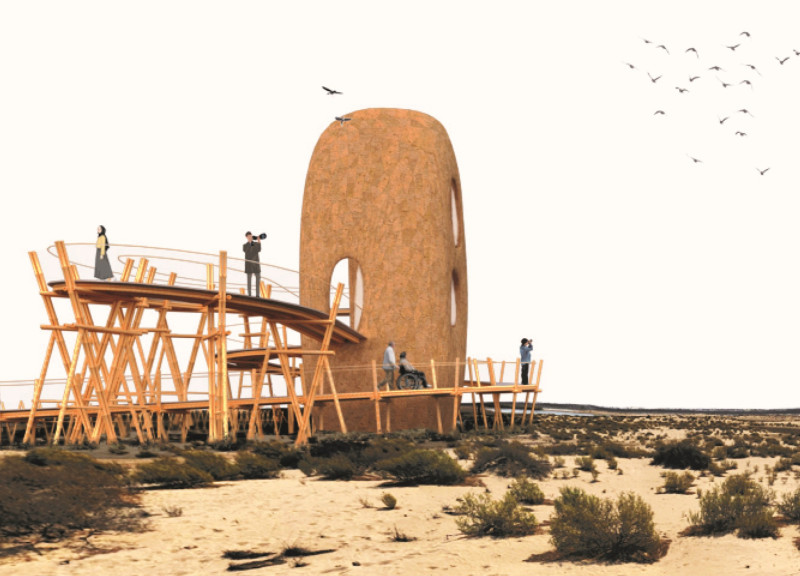5 key facts about this project
The design features a rounded, organic form that mimics natural structures such as termite mounds and bird nests. It includes a spiral ramp that leads visitors to a viewing deck, facilitating an engaging user experience. The primary function of the tower is to provide an unobtrusive vantage point, allowing visitors to observe wildlife without causing disruption to the habitat. This function is supported by large openings that provide expansive sightlines of the wetland area.
The structure comprises a variety of locally sourced materials, underscoring its commitment to sustainability. Bamboo serves as the primary building material, recognized for its strength and minimal ecological impact. Complementary materials include clay and straw, utilized for their thermal properties and traditional building aesthetics. This choice of materials not only enhances the structural integrity but also aligns the tower's design with the vernacular architecture of the region.
Unique Design Elements and Environmental Integration
What sets the Skywatcher Observation Tower apart from similar projects is its holistic approach to architectural design. The integration of a bamboo walkway leading to various informational stations encourages visitor engagement with the surrounding ecosystem. These “nest stations” are strategically placed along the pathway, offering areas for rest and shade while providing educational resources about the wetland environment. The design facilitates a seamless interaction between visitors and nature, emphasizing the importance of conservation.
This project prioritizes sensory experiences, featuring interpretive signage in multiple formats, including Braille, which enhances accessibility for diverse audiences. By incorporating community-crafted elements into the construction process, the project fosters local craftsmanship, strengthening community ties and involvement.
Observation Experience and Cultural Reflection
The observation tower is designed to minimize environmental disturbance, which is critical for wildlife habitats. Its elevation and organic form allow for unobtrusive human interaction within the delicate ecosystem. The design choices reflect an understanding of the local environmental context and cultural heritage, creating a meaningful connection between visitors and the natural landscape.
The Skywatcher Observation Tower serves not only as a physical structure but also as a tool for education and awareness. The facility embodies a commitment to ecological preservation, cultural respect, and community involvement.
Readers interested in a deeper understanding of the Skywatcher Observation Tower are encouraged to explore the project presentation for detailed architectural plans, sections, and designs to fully appreciate the innovative approaches employed in this architectural endeavor.


























